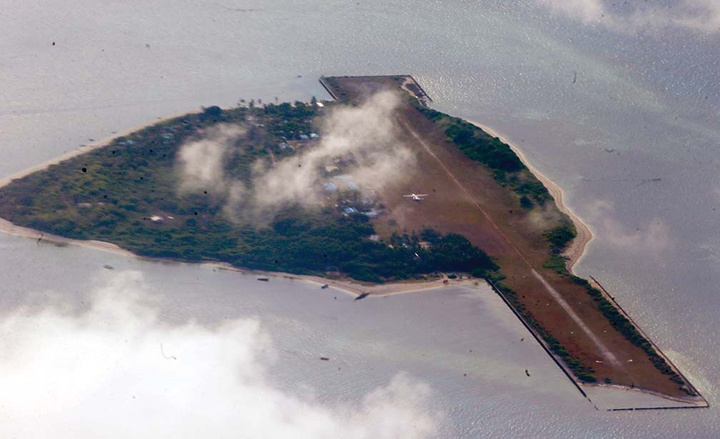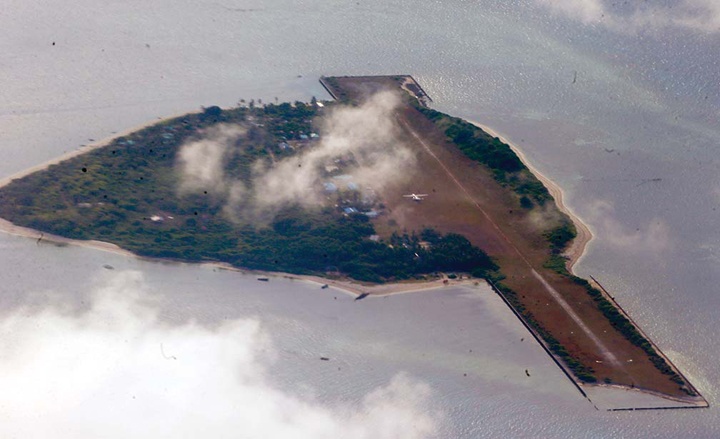
“A CATASTROPHE of epic proportions and we are close to the point of no return,” is how an expert has described the continuing damage to the marine ecosystem due to human activities in the South China Sea (SCS).
Speaking at the webinar, “Reinforcing the 2016 Arbitral Victory: The West Philippine Sea in the Convergence of Strategies,” Liz Derr, founder and chief executive officer at Florida-based Simularity, made the assertion as the Philippines on Monday marked the 5th year of its arbitral victory over China in the West Philippine Sea (WPS).
Simularity is a geospatial intelligence company that uses AI to detect important changes on the ground through a variety of data from optical satellites, radar satellites, drones, RF data, multispectral imagery, AIS ship location tracking, and more.
Tracking the progress of about 300 ships parked around a lagoon in the Spratlys, Derr said, “Human activity in the Spratly islands is damaging the coral reefs that supply food for millions of people in the region.”
She said the hundreds of ships anchored in the Spratlys are dumping raw sewage onto reefs they are occupying, and the excess nutrients in sewage are causing elevated concentration of algae called chlorophyll, “leading to a cascade of reef damage that can take decades to recover from even with active mitigation.”
The damage to the reef “in just 5 years is visible from space,” she said, showing satellite photographs of Chinese militia vessels trailing chlorophyll concentration visible in their wake. She said vessels that have been staying for months in the area have visible chlorophyll trails, “but not all ships have chlorophyll trails possibly due to recent arrival.”
The trails, she noted, “are shit coming out of ships.” The photographs were taken in June 2021, and the new form of damage to the environment is “in addition to the well-documented reef destruction wrought by China’s giant clam harvesting and artificial island building.”
She said damaging these reefs directly affects the fish stock in the entire South China Sea and can lead to a hunger crisis in coastal regions and a collapse of commercial fishing in the South China Sea “This is a catastrophe of epic proportions and we are close to the point of no return.”
Food source for fish
The SCS, Derr pointed out, is an important food source for migratory fish like tuna that travel through the area and “the health of the Spratly Reef feed inhabitants of coastal region in SCS.”
According to Derr’s study, phytoplankton and algal bloom are excess nutrients in the water, primarily along coastline coming from runoff from fertilizer, soil erosion of riverbank and sewage effluent. This echoes what happened in the pristine waters and sand of Boracay in 2018, when President Duterte said the famed tourist spot in the country “had become a cesspool.”
To arrest its decline, the President closed Boracay island to tourists and initiated a rehabilitation on the island to resolve the worsening sewage conditions there. After two years, Boracay was opened in October 2020, following the approval of the Inter-Agency Task Force for the Management of Emerging Infectious Diseases (IATF-EID) in its Resolution 74.
However, Derr pointed out that because the Spratlys is in the middle of the ocean, “there are no runoff from river bank erosions in the area.” “However, there is sewage effluent coming from ship wastewater and human habitation [excrement] without sufficient treatment.”
She added, “When the ships don’t move about, the shit piles up.” As of June 2021, a total of 236 vessels are parked in the Union Banks, comprising several reefs system like Hughes Reef, Ross Reef, Tetly Reef, Lansdown Reef, Johnson South Reef, and Collins Reef.
She said the excess nutrients in the ocean water increase the chlorophyll which is produced by plants of all sizes, “whose concentration can indicate harmful algae activity and is generally accepted measure of water quality, which can be observed and measured in multispectral satellite images.”
Further tipping the balance towards algae bloom causes increased acidification of the water, increasing coral erosion and tremendous damage to reefs that can take generations to recover from and hasten the fish stock decline.
Derr reported a 67-percent decline in the coral reef system in the SCS, adding that, “we have to do something and we have to do it together,” to stop the coral degradation.
She said the Chinese militia vessels are “just sitting there but it is damaging the environment and they need to leave, as it is also against China’s interest.”
China has been reported to have the largest fishing fleet in the Asian region.

